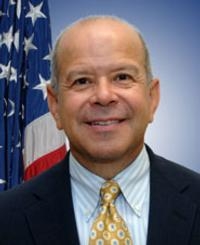Will Conduct Research To Lead To Incorporation Of Unmanned Aircraft Into The NAS
The FAA has announced the selection of the six public entities that will develop unmanned aircraft systems (UAS) research and test sites around the country. These congressionally-mandated test sites will conduct critical research into the certification and operational requirements necessary to safely integrate UAS into the national airspace over the next several years.

Today, UAS perform border and port surveillance, help with scientific research and environmental monitoring, support public safety by law enforcement agencies, help state universities conduct research, and support various other missions for government entities. In selecting the six test site operators, the FAA considered geography, climate, location of ground infrastructure, research needs, airspace use, safety, aviation experience and risk. In totality, these six test applications achieve cross-country geographic and climatic diversity and help the FAA meet its UAS research needs.
The selected sites and institutions include:
- University of Alaska. The University of Alaska proposal contained a diverse set of test site range locations in seven climatic zones as well as geographic diversity with test site range locations in Hawaii and Oregon. The research plan includes the development of a set of standards for unmanned aircraft categories, state monitoring and navigation. Alaska also plans to work on safety standards for UAS operations.
- State of Nevada. Nevada’s project objectives concentrate on UAS standards and operations as well as operator standards and certification requirements. The applicant’s research will also include a concentrated look at how air traffic control procedures will evolve with the introduction of UAS into the civil environment and how these aircraft will be integrated with NextGen. Nevada’s selection contributes to geographic and climatic diversity.
- New York’s Griffiss International Airport.Griffiss International plans to work on developing test and evaluation as well as verification and validation processes under FAA safety oversight. The applicant also plans to focus its research on sense and avoid capabilities for UAS and its sites will aide in researching the complexities of integrating UAS into the congested, northeast airspace.
- North Dakota Department of Commerce. North Dakota plans to develop UAS airworthiness essential data and validate high reliability link technology. This applicant will also conduct human factors research. North Dakota’s application was the only one to offer a test range in the Temperate (continental) climate zone and included a variety of different airspace which will benefit multiple users.
- Texas A&M University – Corpus Christi. Texas A&M plans to develop system safety requirements for UAS vehicles and operations with a goal of protocols and procedures for airworthiness testing. The selection of Texas A&M contributes to geographic and climactic diversity.
- Virginia Polytechnic Institute and State University (Virginia Tech).Virginia Tech plans to conduct UAS failure mode testing and identify and evaluate operational and technical risks areas. This proposal includes test site range locations in both Virginia and New Jersey.
Across the six applicants, the FAA is confident that the agency’s research goals of System Safety & Data Gathering, Aircraft Certification, Command & Control Link Issues, Control Station Layout & Certification, Ground & Airborne Sense & Avoid, and Environmental Impacts will be met. “These test sites will give us valuable information about how best to ensure the safe introduction of this advanced technology into our nation’s skies,” said Transportation Secretary Anthony Foxx.

The FAA’s role in the UAS program is to help the test site operators set up a safe testing environment and to provide oversight that ensures the sites operate under strict safety standards. “Safety continues to be our first priority as we move forward with integrating unmanned aircraft systems into U.S. airspace,” said FAA Administrator Michael Huerta (pictured). “We have successfully brought new technology into the nation’s aviation system for more than 50 years, and I have no doubt we will do the same with unmanned aircraft.”
The FAA has established requirements for each test site that will help protect privacy. The requirements were developed with public input and the final requirements were published on November 14, 2013 in the Federal Register. This followed the February Federal Register notice that asked for public comments on the draft privacy requirements for the six test site operators. Among other requirements, test site operators will be required to comply with federal, state, and other laws protecting an individual’s right to privacy; have publicly available privacy policies and a written plan for data use and retention; and conduct an annual review of privacy practices that allows for public comment.
As required in the 2012 FAA Reauthorization, the Joint Planning and Development Office has developed a comprehensive plan to safely accelerate the integration of civil UAS into the national airspace system. That plan details a multi-agency approach to safe and timely UAS integration and coordination with the NextGen shift to satellite-based technologies and new procedures.
 ANN's Daily Aero-Linx (04.16.24)
ANN's Daily Aero-Linx (04.16.24) Aero-News: Quote of the Day (04.16.24)
Aero-News: Quote of the Day (04.16.24) Airborne 04.10.24: SnF24!, A50 Heritage Reveal, HeliCycle!, Montaer MC-01
Airborne 04.10.24: SnF24!, A50 Heritage Reveal, HeliCycle!, Montaer MC-01 Airborne 04.12.24: SnF24!, G100UL Is Here, Holy Micro, Plane Tags
Airborne 04.12.24: SnF24!, G100UL Is Here, Holy Micro, Plane Tags Airborne-Flight Training 04.17.24: Feds Need Controllers, Spirit Delay, Redbird
Airborne-Flight Training 04.17.24: Feds Need Controllers, Spirit Delay, Redbird




